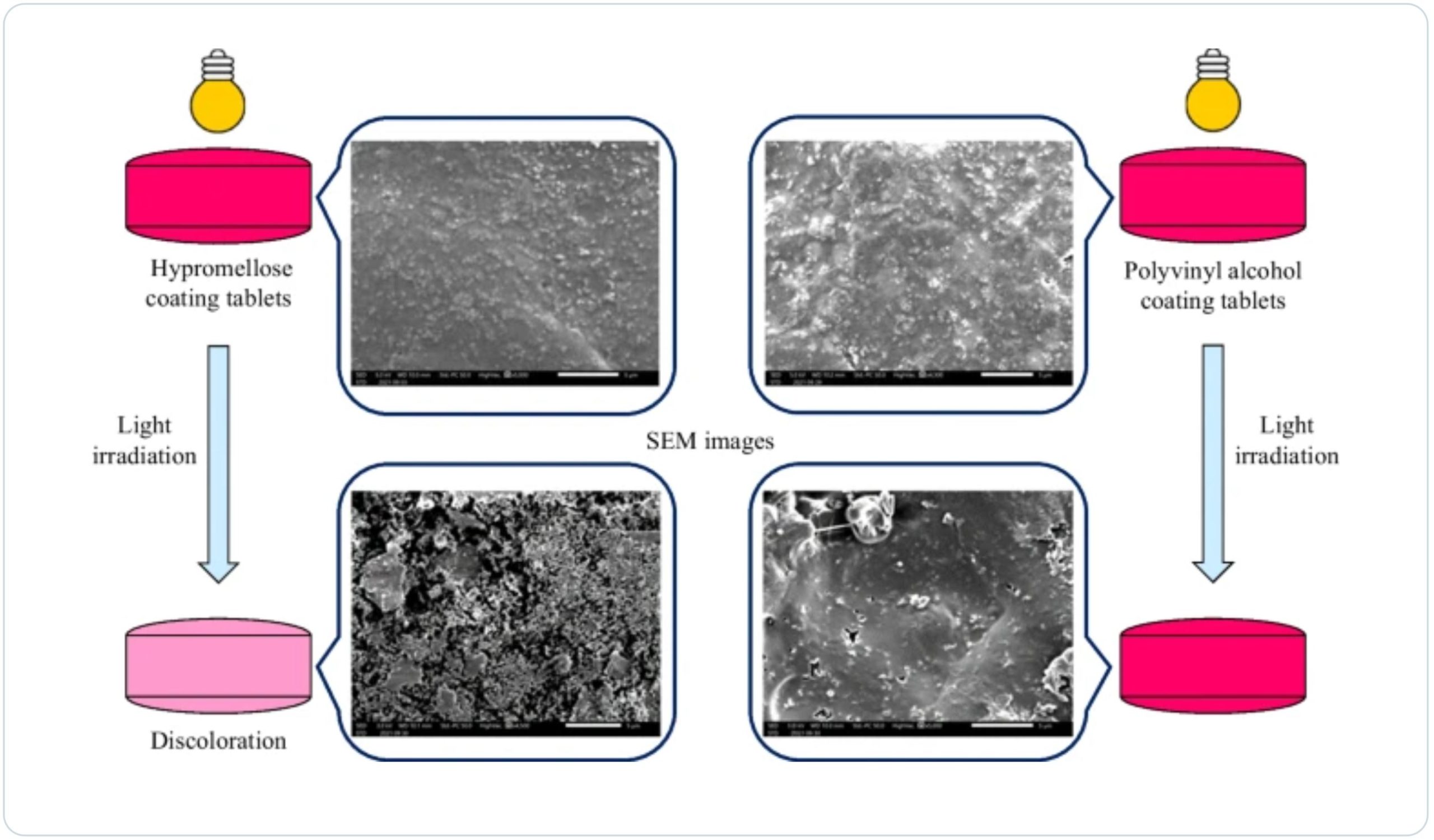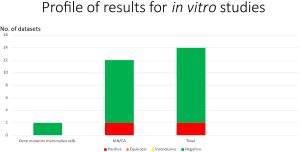Changes in Tablet Color Due to Light Irradiation: Photodegradation of the Coating Polymer, Hypromellose, by Titanium Dioxide

The color of the tablets and capsules produced by pharmaceutical companies is important from the perspectives of product branding and counterfeiting. According to some studies, light can change tablet color during storage. In this study, tablets comprising amlodipine besylate (AB), a well-known light-sensitive drug, were coated with commonly used coating materials and exposed to light. Compared to the tablets that were not exposed to light, the color of those exposed to light changed over time. In fact, a faster and more pronounced color change was observed in the tablets exposed to light; however, the amount of AB did not decrease significantly in these tablets.
The coating materials and their amounts were varied to clarify the materials involved in the color change. Based on the results, titanium dioxide and hypromellose may be involved in the color change process. As titanium dioxide is a photocatalyst, it may induce or promote chemical changes in hypromellose upon light irradiation. Overall, care should be exercised during selection of the coating polymer because titanium dioxide may promote photodegradation of the coatings while protecting the tablet’s active ingredient from light.
Read more here
Matsushima, Y., Hattori, M., Tanaka, A. et al. Changes in Tablet Color Due to Light Irradiation: Photodegradation of the Coating Polymer, Hypromellose, by Titanium Dioxide. AAPS PharmSciTech 25, 26 (2024). https://doi.org/10.1208/s12249-024-02732-x
Read more on Titanium Dioxide – TiO2 here:
- Oral toxicological study of titanium dioxide nanoparticles with a crystallite diameter of 6 nm in rats
- Calcium carbonate as a replacement for titanium dioxide in coating
- A weight of evidence review of the genotoxicity of titanium dioxide (TiO₂)


